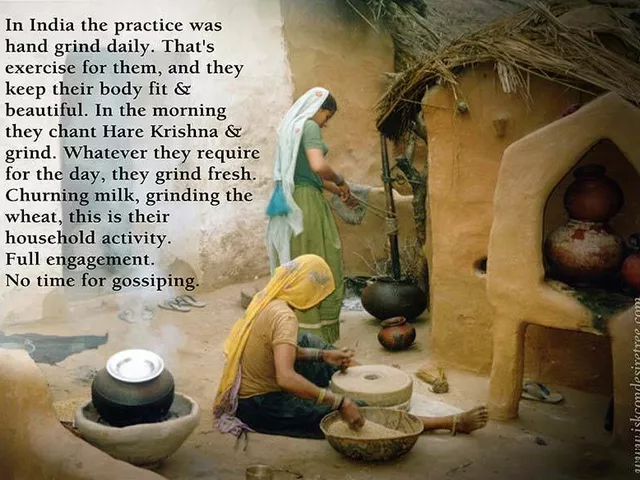
Indian cuisine is rich in flavor and tradition, with a variety of spices and herbs that make it both delicious and healthy. But what makes a traditional Indian diet so beneficial? In this blog, we’ll explore the benefits of eating a traditional Indian diet.
A Balanced Diet: A traditional Indian diet is based on a combination of proteins, carbohydrates, fats, vitamins and minerals. This balance of nutrients helps to ensure that your body receives the essential nutrients it needs to stay healthy. Eating a variety of foods also helps to ensure that you don’t become deficient in any one nutrient.
High in Fiber: Fiber is an important part of any healthy diet, and traditional Indian diets are usually high in fiber. This helps to keep your digestive system running smoothly, as well as helping to reduce the risk of certain diseases such as diabetes and some cancers.
Low in Salt and Fat: Traditional Indian diets are naturally low in salt and fat, which helps to reduce your risk of heart disease and stroke. The use of spices and herbs in Indian cooking also helps to reduce the need for added salt in your diet.
Rich in Antioxidants: Antioxidants are important for protecting your body from the damage caused by free radicals. Traditional Indian diets are rich in antioxidants, which help to protect your body from the damage caused by free radicals.
Eating a traditional Indian diet is a great way to stay healthy and get all the essential nutrients your body needs. By incorporating a variety of foods into your diet, you can ensure that you are getting the essential vitamins, minerals, and antioxidants you need to stay healthy.
Indian cuisine is beloved the world over for its delectable flavors and spices. Many of the dishes are also highly nutritious and make for a great part of a balanced diet. To gain a better understanding of the nutritional benefits of popular Indian dishes, let’s look at some examples.
One of the most popular Indian dishes is dal. This dish is a type of stew made with lentils, spices, and vegetables. It is a great source of protein, fiber, and vitamins. Dal is also packed with antioxidants and minerals like zinc, magnesium, and iron.
Another popular Indian dish is roti. This type of flatbread is usually made with whole wheat flour and can be eaten with any meal. It is a great source of protein, fiber, and healthy carbohydrates. Roti is also low in calories and fat, making it a great addition to any healthy diet.
Finally, there is the popular Indian dish of chana masala. This dish is a type of curry made with chickpeas and spices. It is rich in protein, fiber, and antioxidants. Chana masala is also low in fat and calories, making it a great choice for those looking to maintain a healthy diet.
These are just a few examples of the many nutritious and delicious Indian dishes. Eating these dishes as part of a healthy diet can provide a variety of health benefits, such as improved digestion and weight management. By understanding the nutritional benefits of popular Indian dishes, you can make informed choices and create healthier eating habits.
When it comes to eating healthy, Indian food habits can be a great way to get the nutrition you need. With its unique combination of spices, vegetables, and grains, Indian cuisine offers a variety of delicious and nutritious options. Creating a healthy Indian meal plan can be a great way to make sure you're getting the vitamins and minerals you need for a well-balanced diet. Here are some tips for creating a balanced and healthy Indian meal plan:
- Include a variety of foods: A healthy Indian meal plan should include a variety of foods from different food groups. This includes grains like rice and wheat, legumes like lentils, vegetables, fruits, dairy products, and lean proteins. Variety is key when it comes to getting the nutrients your body needs.
- Go for whole grains: Whole grains are an important part of a healthy Indian diet. Swap out white rice for brown rice, wheat flour for whole wheat flour, and opt for multigrain breads and crackers. These whole grains contain more fiber, vitamins, and minerals than their refined counterparts.
- Include healthy fats: Healthy fats, like those found in nuts, seeds, and avocados, are an important part of a balanced diet. Including these foods in your meal plan will help you meet your daily fat needs while also providing valuable nutrients.
- Go for low-fat dairy: Dairy products, like milk, yogurt, and cheese, are an important source of calcium and protein. When creating your meal plan, opt for low-fat versions of these products to keep calories and saturated fat intake in check.
- Include spices and herbs: Spices and herbs are an integral part of Indian cuisine. Not only do they make food tasty, but they also provide antioxidants and other health benefits. So don't be afraid to add a pinch of turmeric, cardamom, or coriander to your meals.
- Control portion sizes: Eating too much can lead to weight gain, even if the food you're eating is healthy. To keep your calorie intake in check, be sure to watch your portion sizes. Use smaller plates and bowls to help you control your portions.
Creating a healthy Indian meal plan can be a great way to make sure you're getting the nutrition your body needs. By including a variety of foods, whole grains, healthy fats, low-fat dairy, spices and herbs, and controlling portion sizes, you can create a balanced and nutritious meal plan that will help you stay healthy and fit.
Eating healthy Indian food doesn't have to be expensive or time-consuming. With a few simple tips and tricks, you can enjoy authentic and nutritious Indian cuisine without breaking the bank.
Shop Smart
When grocery shopping, be sure to check the prices of fresh produce against pre-packaged and processed items. Many times, you can find great deals on fresh produce that can be used to make healthy Indian food. Also, take advantage of any deals or discounts your local store may be offering. This could be an excellent way to save money and fill your cart with healthy Indian staples.
Cook Large Portions
When cooking Indian food, it's a great idea to make large batches that can last for several days. This way, you can cook once and have enough food for multiple meals, saving you time and money in the long run. Plus, you can easily freeze leftovers for a future meal.
Make Your Own Spice Blends
One of the best ways to save money and eat healthy Indian food is to make your own spice blends. Buy whole spices in bulk and grind them yourself, or mix and match your favorite flavors to create unique blends. This will help you save money and create delicious dishes with plenty of flavor.
Eat Seasonally
Eating seasonally is a great way to save money and enjoy healthy, fresh produce. Buy seasonal produce from farmers' markets or local grocers, and you'll be able to enjoy a variety of delicious, nutritious fruits and vegetables. Plus, in-season produce is often cheaper than out-of-season items.
These tips can help you enjoy healthy Indian food on a budget. With a little creativity and planning, you can create delicious and nutritious Indian dishes that won't break the bank.







Write a comment